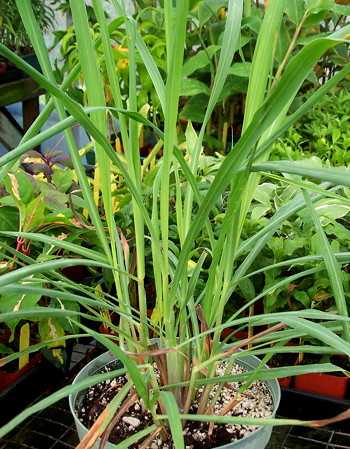
Return to This Plant's Category: Cuphea to Dyschoriste
Cymbopogon citratus
Lemon Grass
Code: 90472
Price: $9.95
Quantity in Basket: None
Family: Poaceae
This rapid growing perennial tropical grass is native to Southeast Asia where it is used in cooking to give a lemon flavoring. Also, it is a fine looking ornamental, growing in a dense clump to 3 feet high and as wide. Leaves emit a wonderful lemony fragrance when bruised. Plant in ground or in containers. Prefers full sun, but tolerates a bit of shade. Best in rich soil with good drainage. It is not frost hardy. In cold climates it's suggested to makes small potted divisions and overwinter in a bright indoor location. The bulbous lower leaf sections are harvested and minced or mashed for asian cooking. Leaves may be used fresh or dried for flavoring. USDA zones 10 - 11.



(B) Hanging
basket (D) Dwarf
under 12" (F) Flourescent lights for
indoor light culture (H) Humid
conditions (M) Miniature
under 6" (T) Terrarium
plant (W) Winter
flowering
Key to USDA Hardiness Zones
